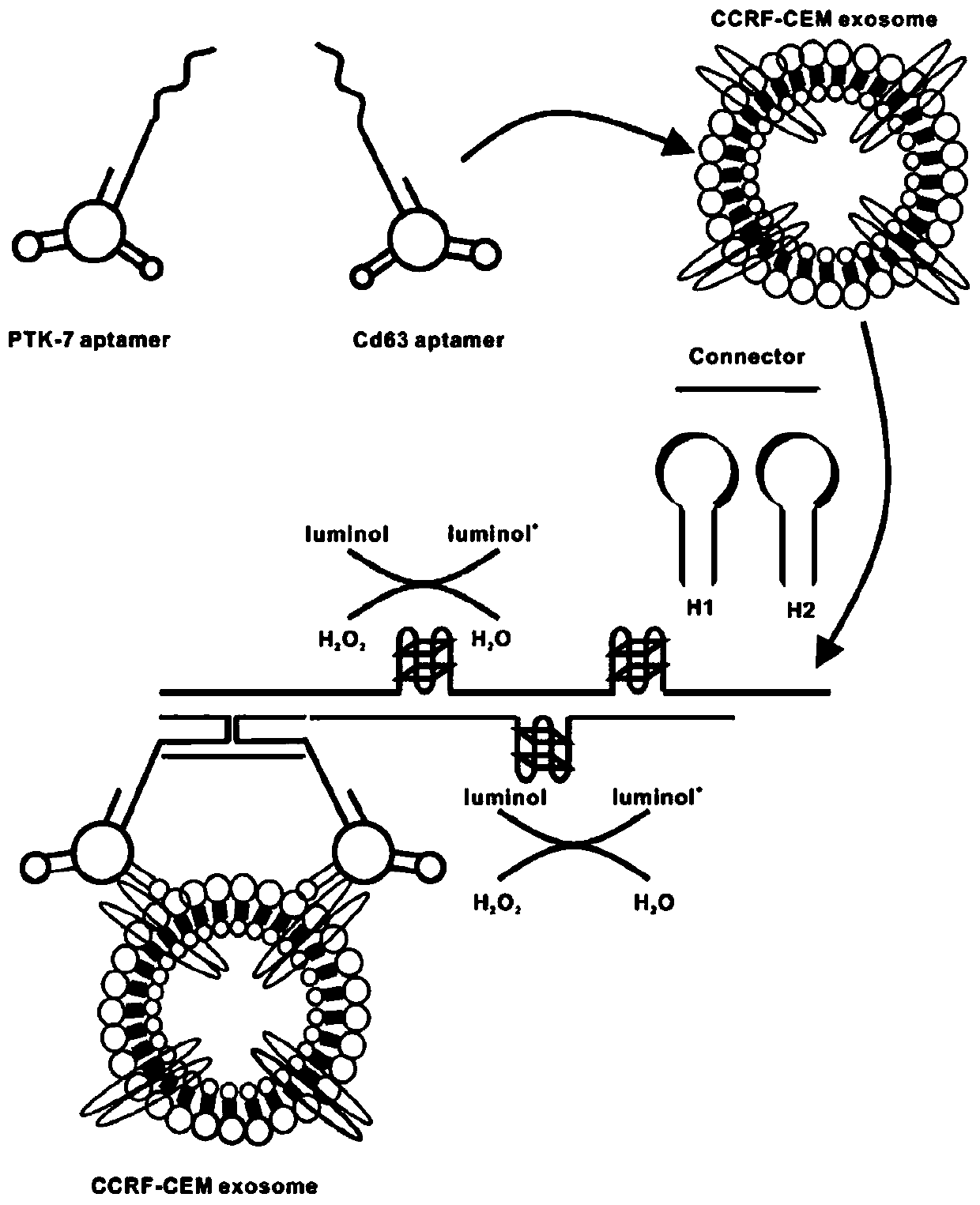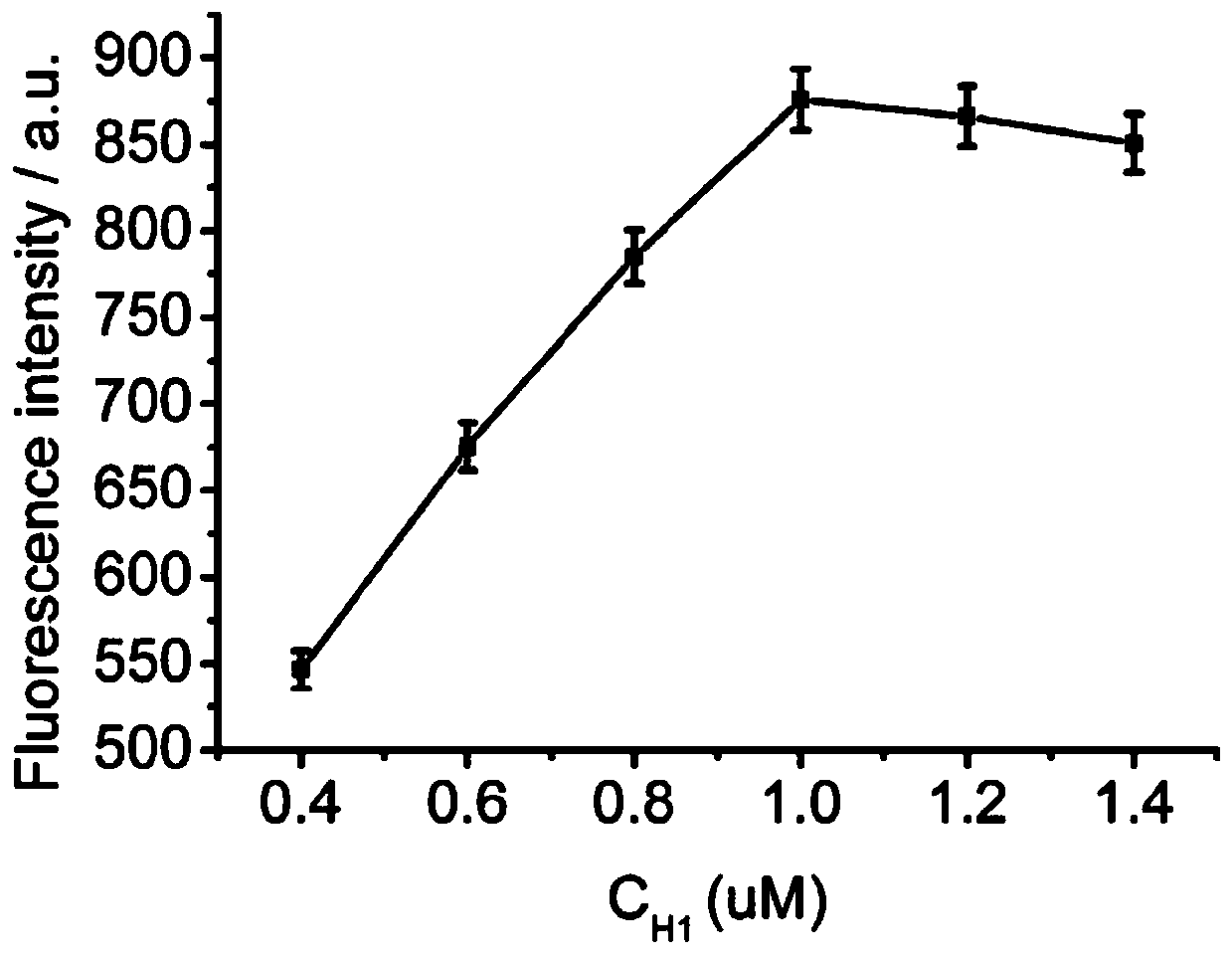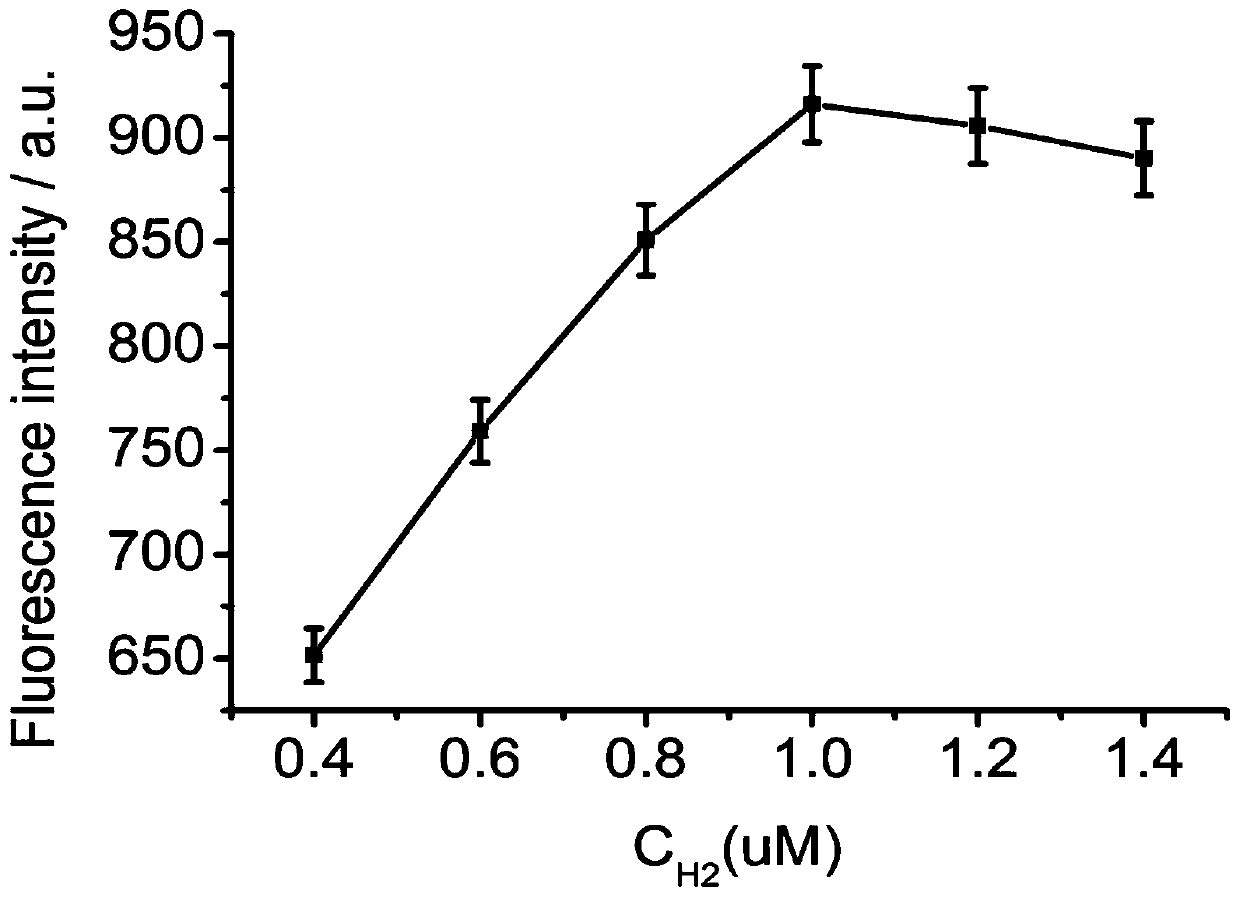Biosensor for detecting exosome based on double aptamers, and production method and application thereof
A technology of biosensors and exosomes, applied in the field of biosensors, can solve the problems of cumbersome sample pretreatment process, and achieve the effects of low price, improved reaction speed, and low process cost
- Summary
- Abstract
- Description
- Claims
- Application Information
AI Technical Summary
Problems solved by technology
Method used
Image
Examples
Embodiment 1
[0050] The preparation method of described biosensor comprises the following steps:
[0051] The operation steps of exosome extraction are as follows:
[0052] CCRF-CEM cell culture at 37 °C containing 5 % CO 2 in humid air. Passage every four days. RPMI-1640 4.5g / L, special grade fetal bovine serum (FBS), 1% antibiotics (100 U / mL penicillin and 100 μg / mL streptomycin), were used to culture the cells. To produce exosomes, cells were cultured in conditioned medium (10% FBS and 1% antibiotics) for three days and isolated using different ultracentrifugation methods. To isolate exosomes, cell debris was first removed from the culture medium by centrifugation at 2000 × g for 20 min. Cell vesicles were isolated by centrifugation at 10,000 × g for 45 min. Exosomes containing the supernatant were filtered with a 0.20-μm syringe filter. Finally, exosomes were harvested by centrifugation at 10,000 × g (40,000 rpm) for 150 min. The exosomes were redistributed in PBS and stored at ...
Embodiment 2
[0060] The preparation method of described biosensor comprises the following steps:
[0061] The operation steps of exosome extraction are as follows:
[0062] CCRF-CEM cell culture at 37 °C containing 5 % CO 2 in humid air. Passage every four days. RPMI-1640 4.5g / L, special grade fetal bovine serum (FBS), 1% antibiotics (100 U / mL penicillin and 100 μg / mL streptomycin), were used to culture the cells. To produce exosomes, cells were cultured in conditioned medium (10% FBS and 1% antibiotics) for three days and isolated using different ultracentrifugation methods. To isolate exosomes, cell debris was first removed from the culture medium by centrifugation at 2000 × g for 20 min. Cell vesicles were isolated by centrifugation at 10,000 × g for 45 min. Exosomes containing the supernatant were filtered with a 0.20-μm syringe filter. Finally, exosomes were harvested by centrifugation at 10,000 × g (40,000 rpm) for 150 min. The exosomes were redistributed in PBS and stored at ...
Embodiment 3
[0070] The preparation method of described biosensor comprises the following steps:
[0071] The operation steps of exosome extraction are as follows:
[0072] CCRF-CEM cell culture at 37 °C containing 5 % CO 2 in humid air. Passage every four days. RPMI-1640 4.5g / L, special grade fetal bovine serum (FBS), 1% antibiotics (100 U / mL penicillin and 100 μg / mL streptomycin), were used to culture the cells. To produce exosomes, cells were cultured in conditioned medium (10% FBS and 1% antibiotics) for three days and isolated using different ultracentrifugation methods. To isolate exosomes, cell debris was first removed from the culture medium by centrifugation at 2000 × g for 20 min. Cell vesicles were isolated by centrifugation at 10,000 × g for 45 min. Exosomes containing the supernatant were filtered with a 0.20-μm syringe filter. Finally, exosomes were harvested by centrifugation at 10,000 × g (40,000 rpm) for 150 min. The exosomes were redistributed in PBS and stored at ...
PUM
| Property | Measurement | Unit |
|---|---|---|
| Luminescence spectrum | aaaaa | aaaaa |
Abstract
Description
Claims
Application Information
 Login to View More
Login to View More - R&D
- Intellectual Property
- Life Sciences
- Materials
- Tech Scout
- Unparalleled Data Quality
- Higher Quality Content
- 60% Fewer Hallucinations
Browse by: Latest US Patents, China's latest patents, Technical Efficacy Thesaurus, Application Domain, Technology Topic, Popular Technical Reports.
© 2025 PatSnap. All rights reserved.Legal|Privacy policy|Modern Slavery Act Transparency Statement|Sitemap|About US| Contact US: help@patsnap.com



